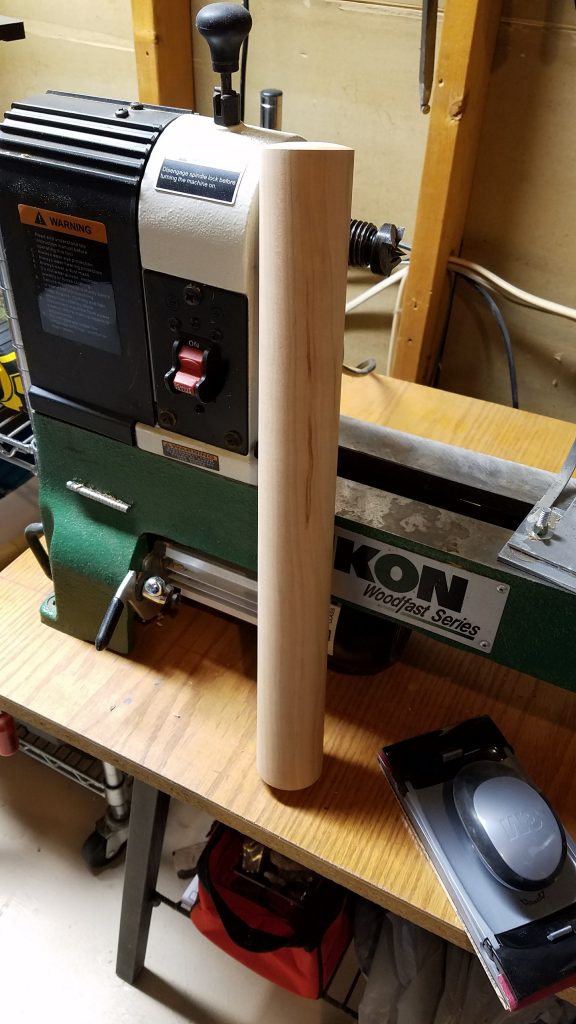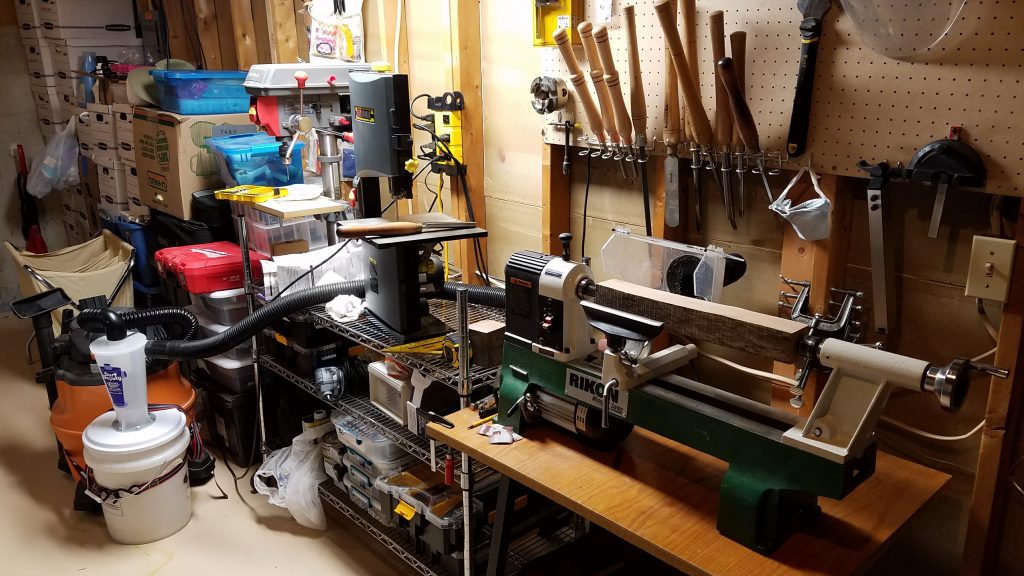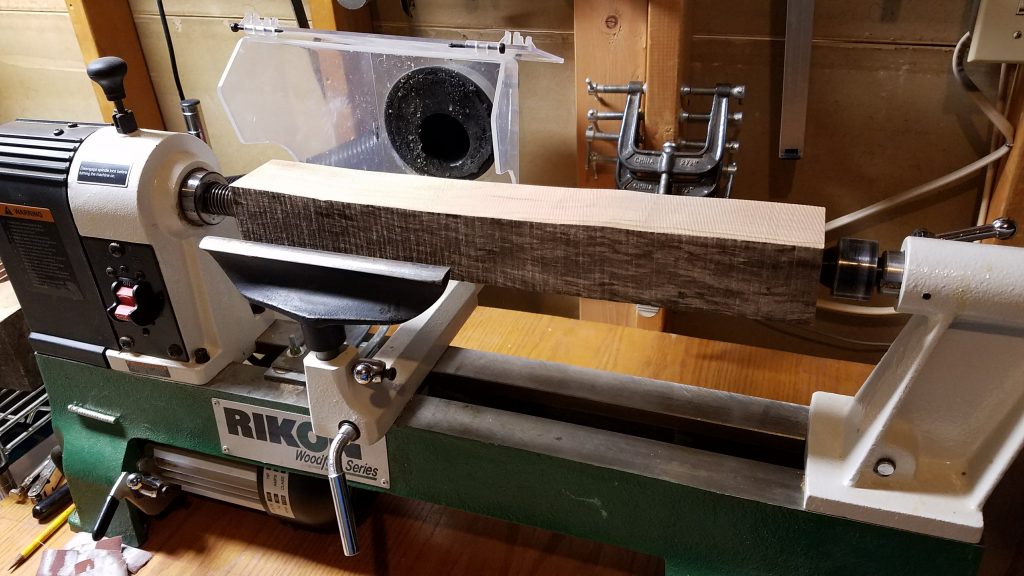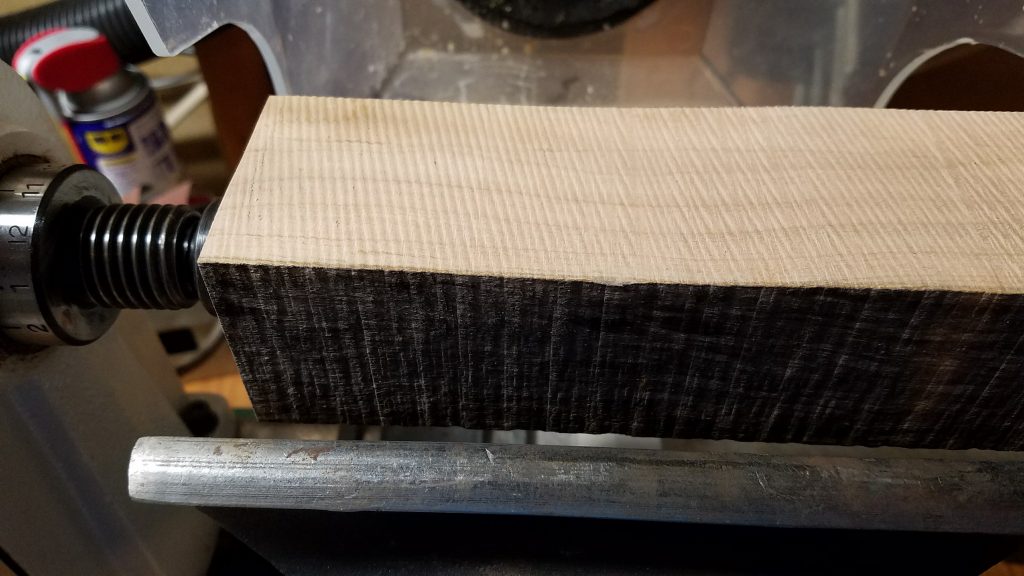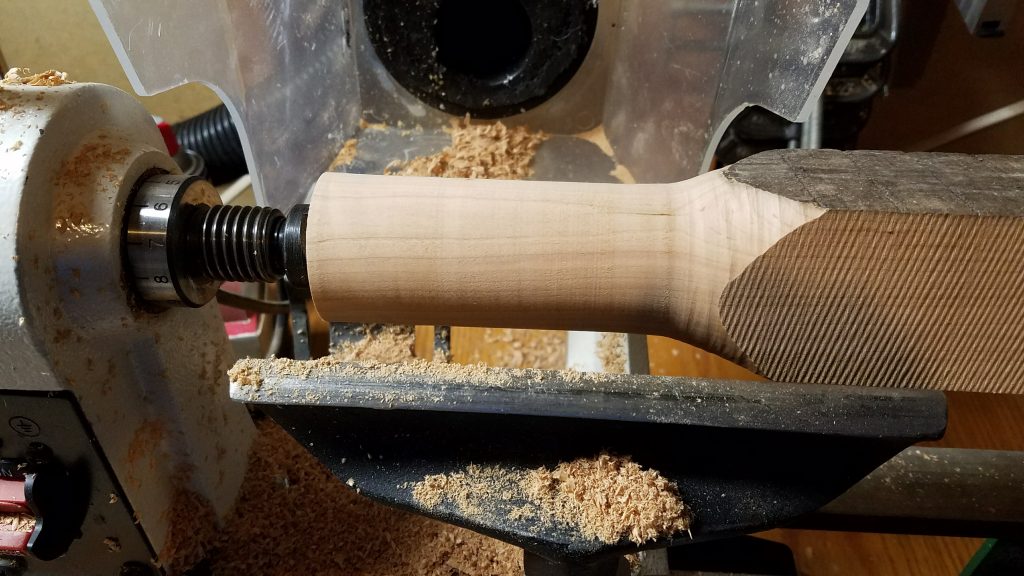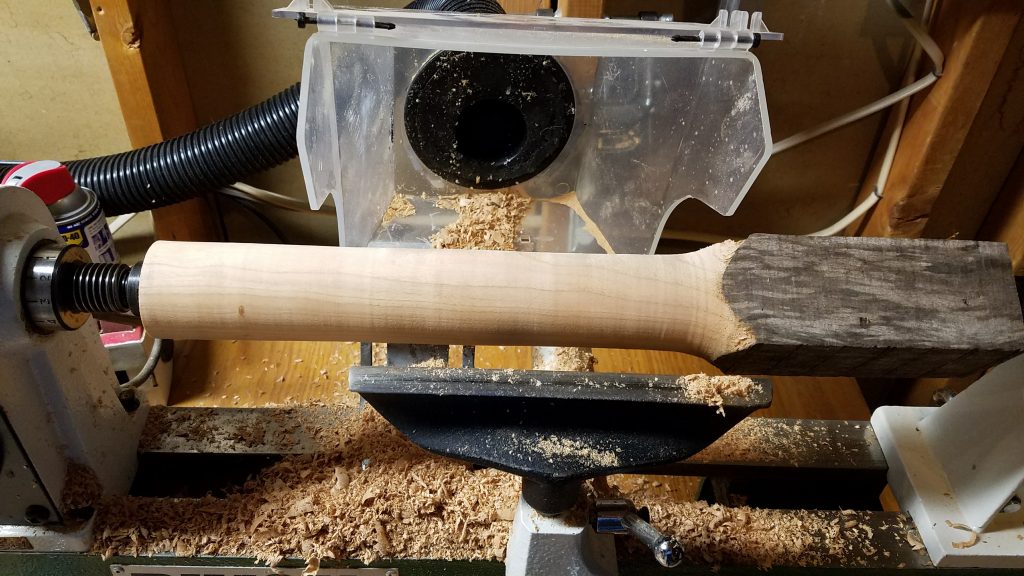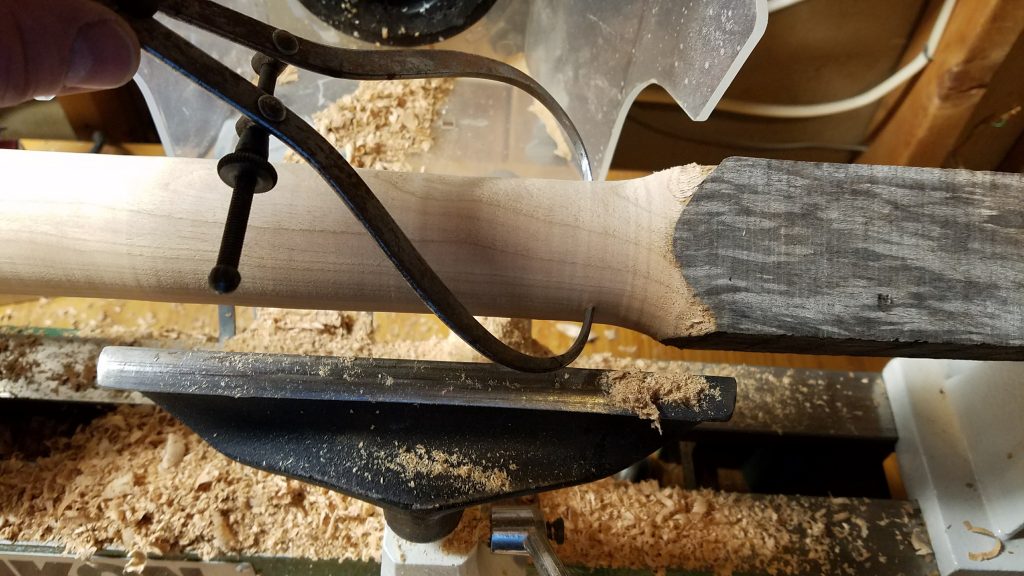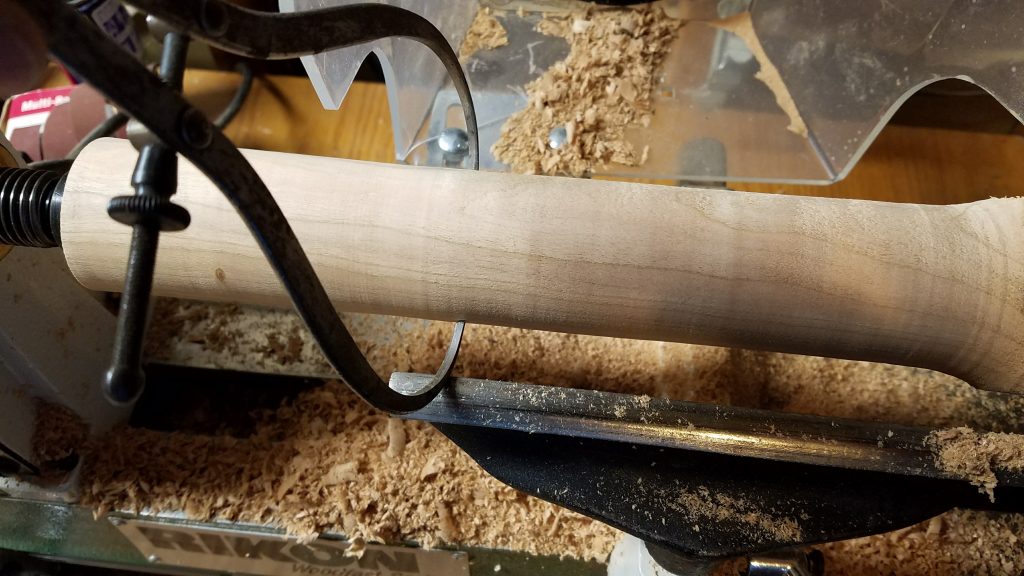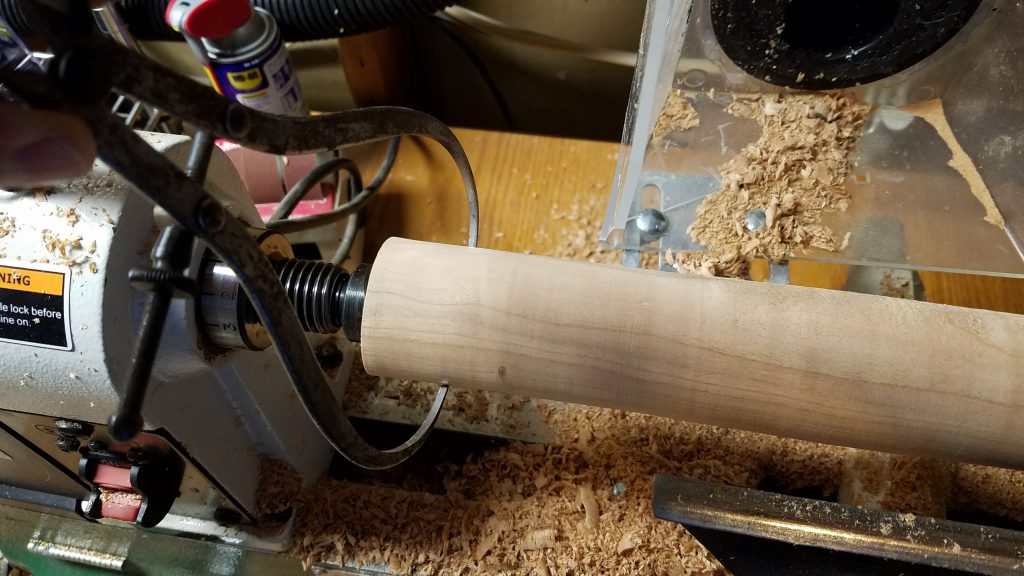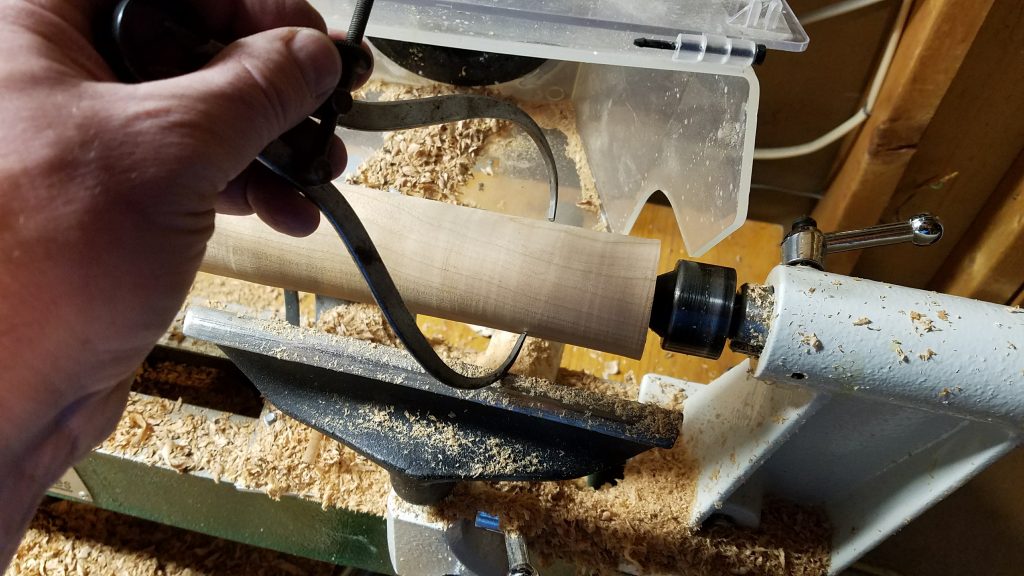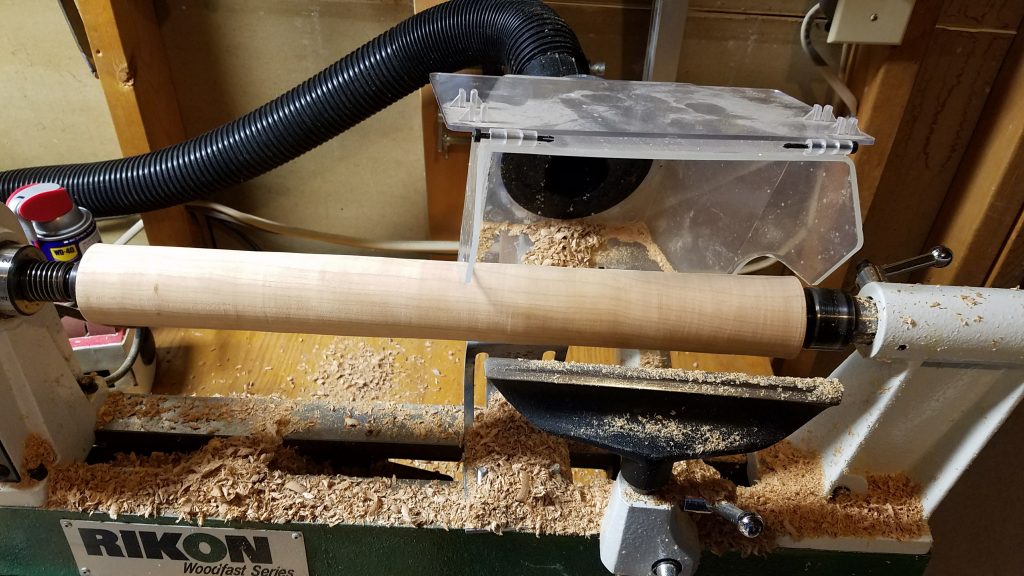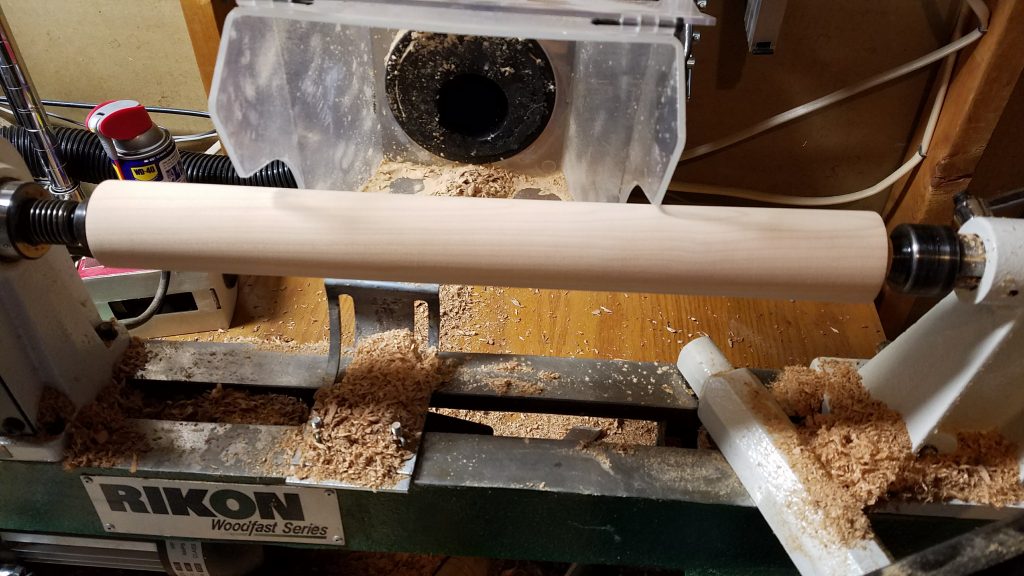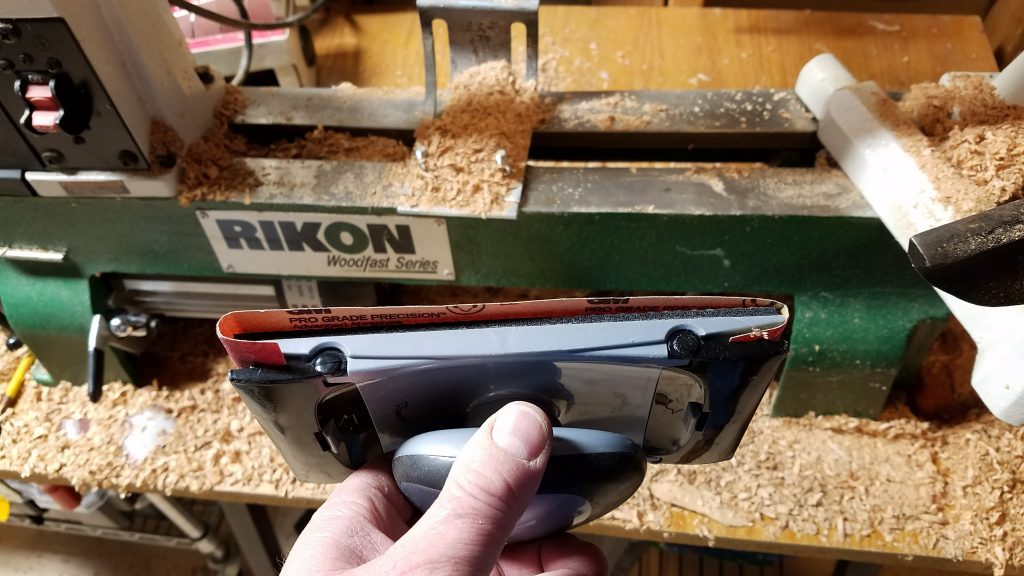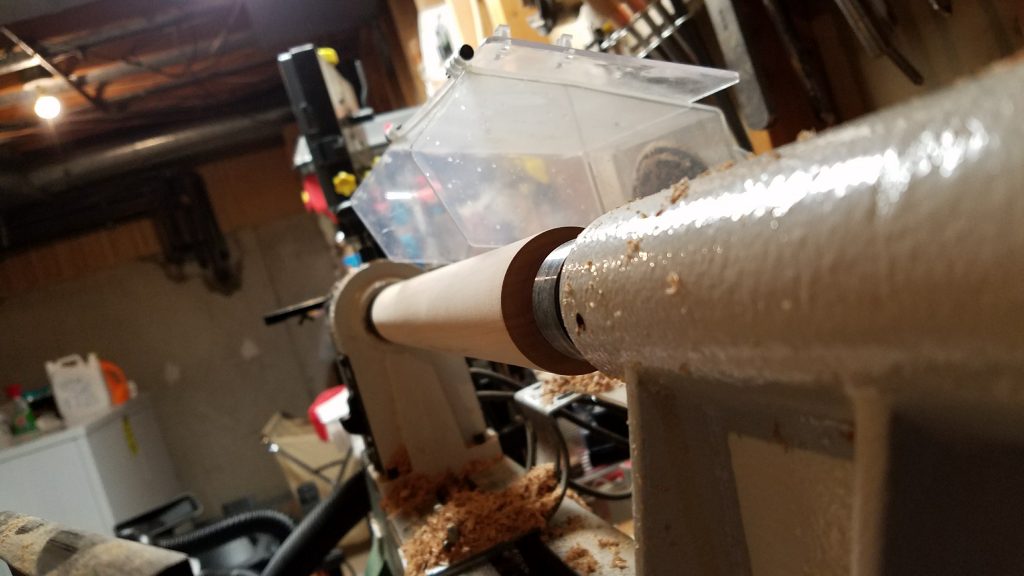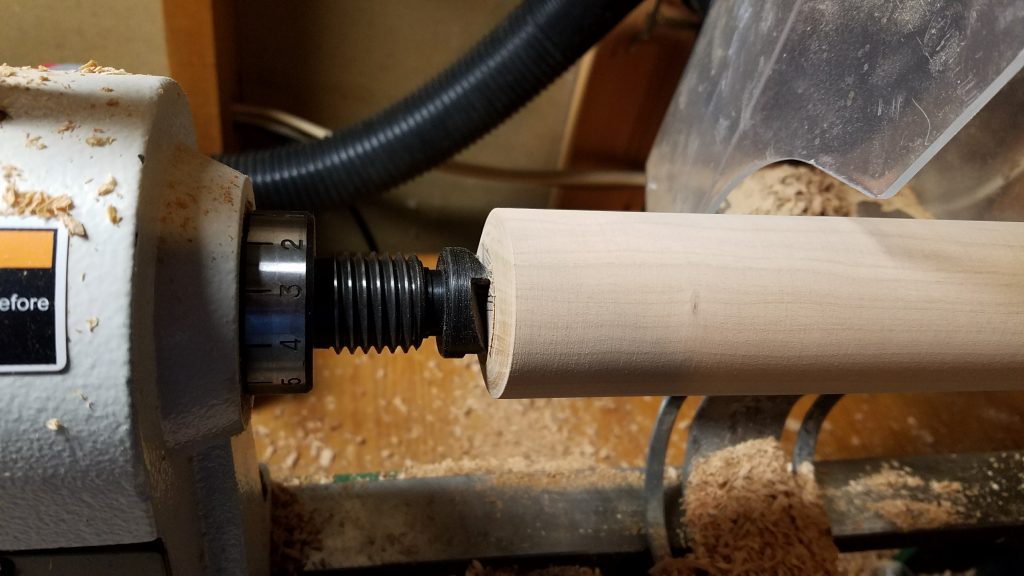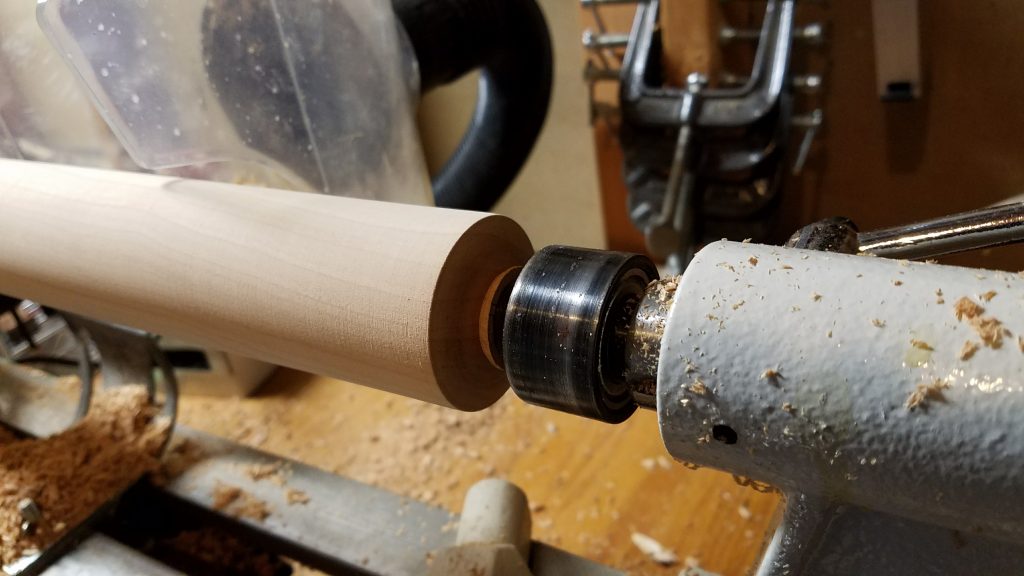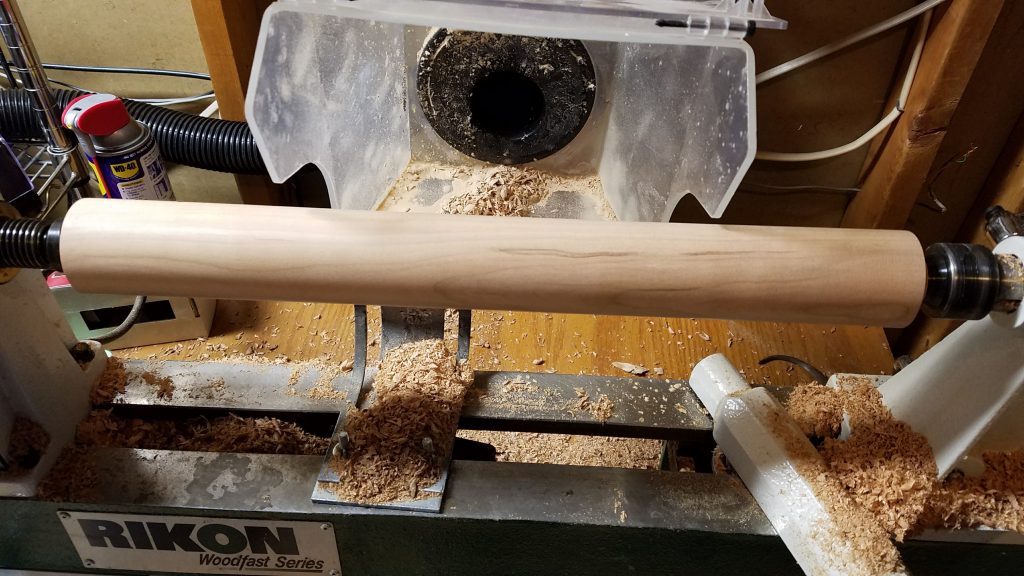I like turning rolling pins. Maybe it’s because of the unique challenges they present, like making a perfectly uniform cylinder. Maybe it’s because Marisa makes many fabulous baked creations with them, like pizzas, pies, and potica.
I made this one because we didn’t have one in Michigan. This became the first project I made in the Small Shop.
Like I mentioned above, turning rolling pins present some unique challenges. With other spindles, you measure and mark the different points of interest, and turn the detail around them. With a rolling pin, you want the entire rolling surface to be the same diameter. It should be uniform and smooth.
The style of this one is a straight French or rolling dowel. It doesn’t have any taper to it, and doesn’t have any handles. Marisa likes this style for pizza dough.
I cut a blank of cherry about 2 1/2″ square, and about 16″ long, the capacity of the lathe.
I cut the blank out of a cherry 4×4 I had milled a few years earlier. I cut about an inch off of two faces.
The small 9″ Performax bandsaw did a pretty admirable job.
I started roughing it down to about 2 1/4″ in diameter.
As I roughed it down, I frequently checked the diameter with calipers.
I used a roughing gouge to get it round, and a 1″ skew for the final finish turning.
I then began sanding it.
I used a basic 3M sanding pad. The semi-rigid rubber backing on this sanding pad helps ensure a uniform surface.
Looking down lengthwise helped to see if it was good.
After it was rough sanded, I finished the ends.
I sanded down to 400 grit. This left a very smooth surface.
It has a nice weight and works well rolling out pizza dough.
Thanks for looking!

